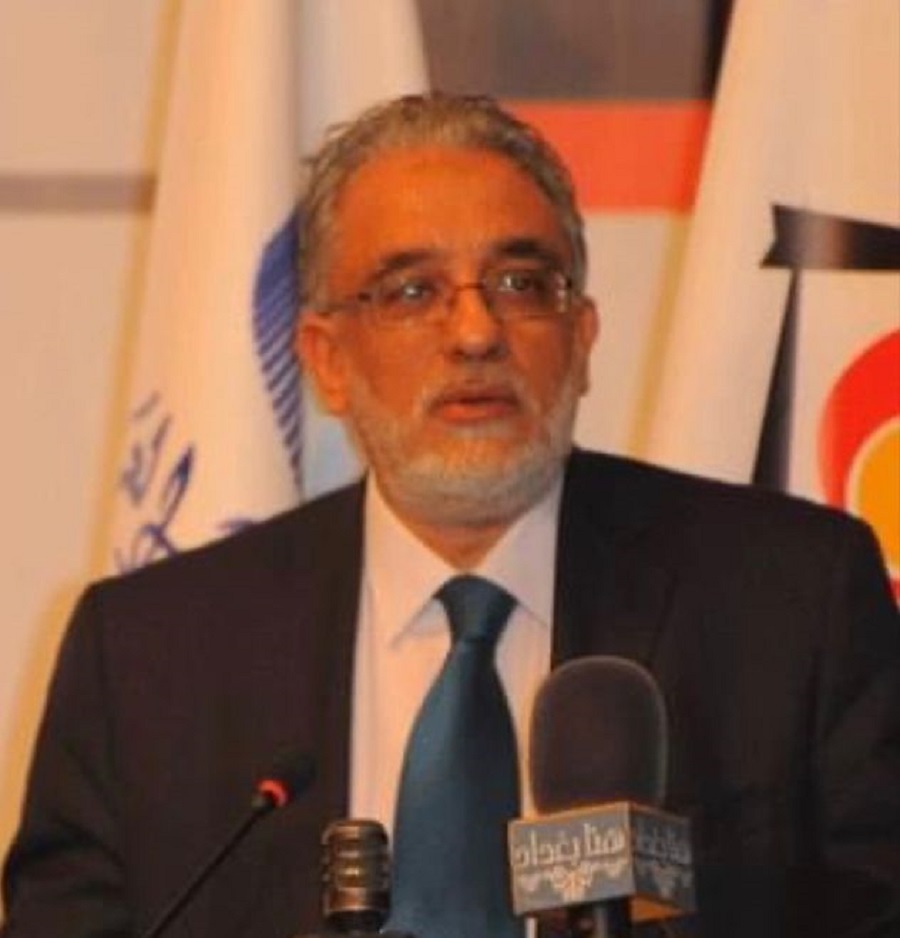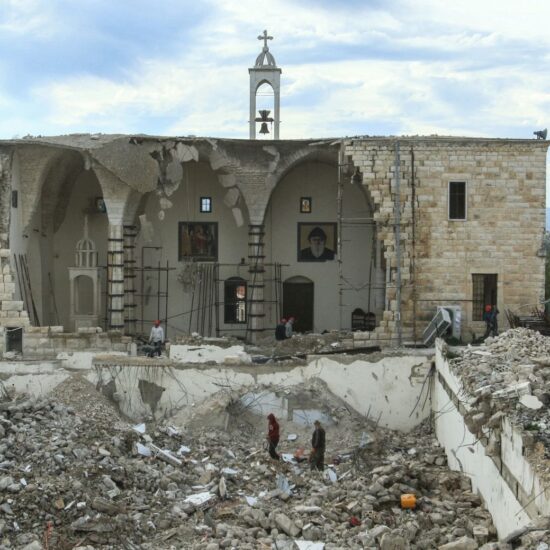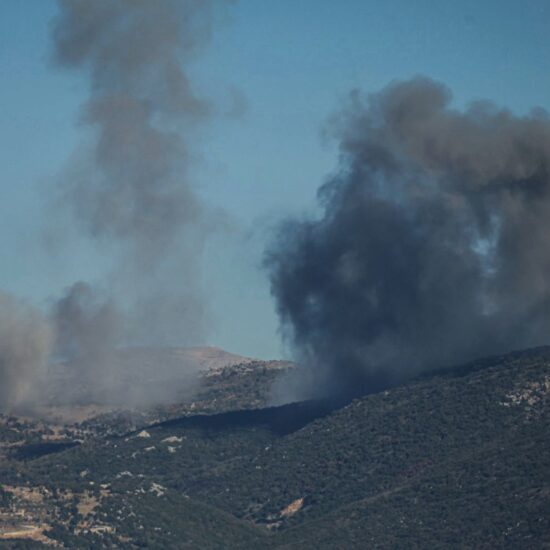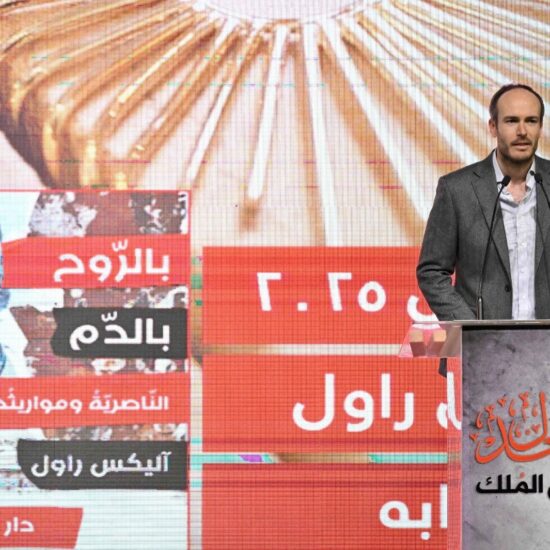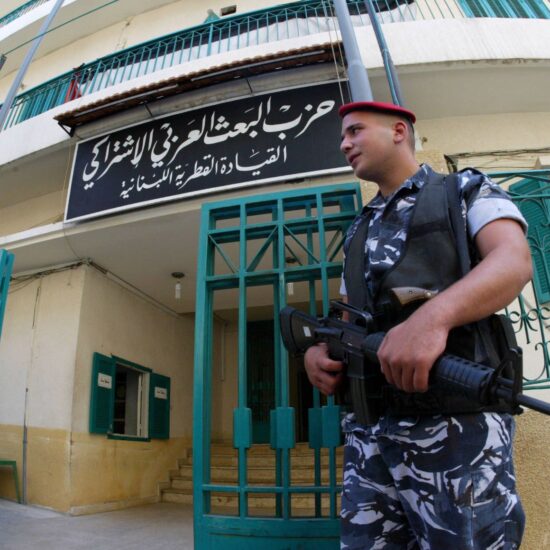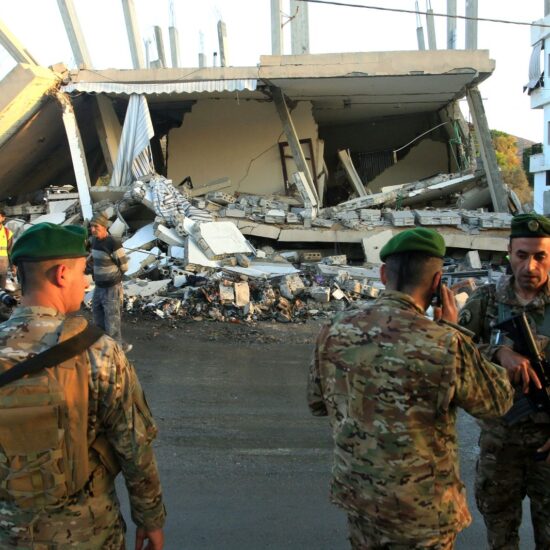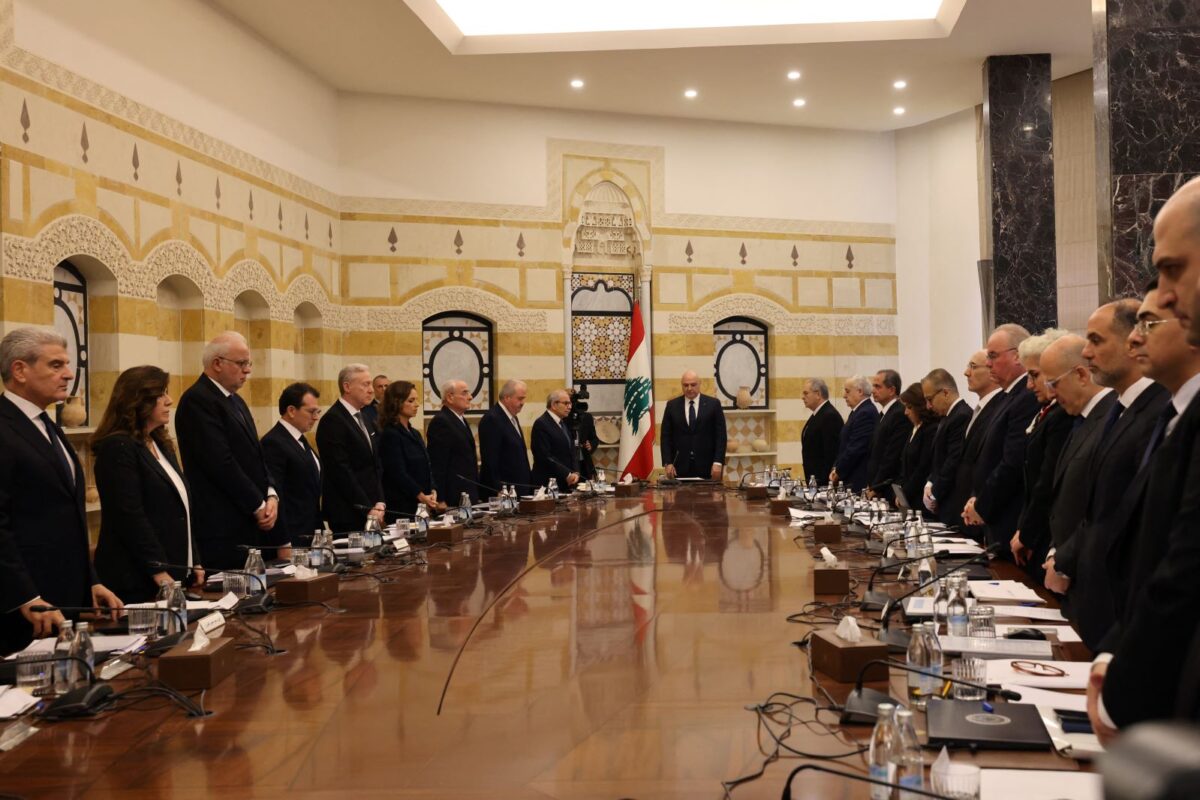
Lebanon faces critical financial, socio-political, and economic challenges amid regional transformations, heightened by geopolitical tensions over oil reserves, shifting alliances, and energy security concerns.
The formation of a new government in Lebanon comes at a critical juncture, both domestically and regionally. The country faces profound financial, socio-economic, and political challenges that demand urgent and innovative solutions. These internal struggles are exacerbated by the broader transformations sweeping through the Middle East, necessitating a new entente that aligns Lebanon’s future with the evolving regional landscape.
Lebanon again will be the victim of more division as President Trump’s proposal to “take over” Gaza and drive out the Palestinian population, insisting that he had not committed to using U.S. troops to clear the territory and that any relocation of Palestinians would be temporary. Trump’s brazen proposal to move as many as two million Palestinians out of Gaza and seize and redevelop it as a U.S. territory met with immediate opposition from key American partners and officials around the world, with many expressing support for a Palestinian state, and experts calling the idea a breach of international law. Less than 24 hours after Mr. Trump floated the plan, top administration officials sought to soften it.
The October 7 war marked a turning point in the Middle East, with Israel’s decisive actions against Hamas in Gaza and Hezbollah in Lebanon leading to the dismantling of entrenched militant infrastructures. The collapse of Bashar al-Assad’s regime in Syria and the rise of new rebel factions have further altered the regional landscape. These shifts have created a power vacuum, prompting neighboring countries and international players to reassess their strategies and alliances. Moreover, a new government leading to political instability and facing economic challenges can create a favorable environment for foreign direct investment (FDI). Lebanon grapples with both political uncertainty, a rampant corruption and economic hurdles, making investors hesitant to engage. Investors are often deterred by the uncertainty surrounding government policies, which hampers economic growth and development. It is not a quest for stability in Lebanon but also a seemingly international push to face world economic challenges, such as high unemployment rates and a lack of diversification, further contribute to the challenging investment landscape. The World Bank’s Ease of Doing Business Index highlights the challenges faced by several Middle Eastern countries in creating a conducive environment for business, with rankings below the global average. This dual concern for political stability and economic struggles underscores the complexities facing the region and underscores the need for comprehensive reforms to attract sustainable foreign investment.
It’s the oil issue again…..
The need for more oil follows the disruption of Russian energy supplies to Europe, there has been a heightened demand for oil from Middle Eastern countries like Saudi Arabia, the UAE, and Iraq. These countries have ramped up production to fill the gap left by Russia. The war has led to increased volatility in global energy prices, affecting the economies of Middle Eastern countries that rely heavily on oil exports. While higher prices benefit oil-exporting nations, they also lead to higher costs for importing countries in the region. Hence higher oil prices have boosted the revenues of oil-exporting Middle Eastern countries, contributing to economic growth.
Based on estimates, Lebanon’s offshore oil reserves are projected to range between 440 and 675 million barrels, with an average of 557.5 million barrels. The potential revenues from these reserves are substantial. The average annual revenue from oil production is estimated at $4.5 billion. The total estimated value of Lebanon’s oil reserves over a 20-year period is approximately $90 billion. Henceforth, the war has prompted some Middle Eastern countries to reassess their geopolitical alignments. Nations like Saudi Arabia and the UAE have strengthened their ties with Western countries, seeking to diversify their energy partnerships and reduce dependence on Russian energy. The conflict has underscored the importance of energy security for Middle Eastern nations, leading to increased investments in renewable energy and efforts to enhance domestic energy production
The occupied Palestinian territories also have substantial oil and gas reserves, estimated at around 122 trillion cubic feet of natural gas and 1.7 billion barrels of oil. However, political and legal challenges have prevented the Palestinians from exploiting these resources. Hence we can understand President Trump’s Middle East Strategy, including expanding the Abraham Accords and transforming U.S. policy in the region.
How does Lebanon geoeconomics look in MENA region
According to the UN’s initial assessment, made in October 2024, Lebanon economy is expected to contract by around 9.2% y/y in 2024 compared to a no-war scenario, and unemployment is expected to rise to 32.6% given the loss of employment in the trade, tourism, and agricultural sectors and the destruction of thousands of Small and Medium Enterprises. The ongoing conflicts are also resulting in the massive, forced displacement of millions of people, many of whom have fled to neighboring countries (notably to Egypt, Jordan, and Iraq), which already are struggling to cope with the spillover of the conflict. The prolongation of war in Lebanon will accelerate the exodus of skilled labor and capital, further undermining the country’s potential for long-term growth. The spillovers into neighboring economies, the prolongation of the wars in Gaza and Lebanon is adding further uncertainty and amplifying spillovers into neighboring countries and the rest of the region. For the Middle East and North Africa region, the IMF has lowered its predicted growth to 2.1% y/y for 2024, a drop of 0.6% due to the wars and lower oil production. In both Egypt and Jordan, growth has weakened as sectors such as tourism and trade have been badly hit. In Egypt, growth fell sharply from 6.6% y/y in 2022 to 3.8% in 2023 and is expected to reach 2.5% y/y in 2024. In Jordan, growth stabilized around its 2022 level of 2.6% y/y last year but is likely to drop to 2.4% y/y in 2024. In a broader context, growth across the region has been generally low compared to the average in other emerging economies as the post-Covid recovery has been hampered by sustained structural impediments to improved productivity, slow reforms, and now devastating conflicts. Fiscal sustainability and debt problems are at the forefront. Lacklustre growth, the slow pace of reforms and uncertainty are weighing on the already strained public finances of many oil-importing countries. Both Egypt and Jordan face large fiscal deficits (6% and 5.1% of GDP respectively in 2023) and elevated debt levels (95.2% and 89.2% of GDP respectively in 2023), and the conflicts have aggravated these concerns. However, in both countries, authorities have stayed the course with fiscal reforms, though at a slower pace than prior to the conflict, and have been helped by sustained external financial support from development partners in the form of concessional financing.
qThe hostile external environment, with a combination of high interest rates in developed economies and a severe escalation in geopolitical risks since October 2023, has weighed significantly on trade activity and flows of capital into MENA economies and deepened already large and growing external imbalances in oil importing economies. In particular, the severe disruption of shipping in the Red Sea has led to a 70% decline in the volume of containers transiting through the Suez Canal (SC) compared to pre-conflict level. The ensuing loss of more than $8bn of SC receipts is a major external shock to Egypt’s balance of payments and has increased the country’s dependence on bilateral and multilateral aid and financial support to bridge its financing gaps. Similarly in Jordan, external financing needs are likely to rise given an expected widening of the current account deficit from 1.2% of GDP in 2023 to 5.3% in 2024, highlighting the crucial nature of sustained concessional financing to Jordan during this period.
What is forcing the new entente in the Middle east
The New Emerging Geo-Economics of the Middle East need to promote its political and commercial interests. A stable Lebanon is key to that. Looking at the events of the past months it is to highlight that the US made a lot of pressure to stabilize Lebanese politics through lobbying towards the appointment of General Joseph Aoun and the facilitation of the nomination of judge Nawaf Salam, a duo that understands that Lebanon needs a turnover and break away from Iranian influence.
Unlike the post-1945 era, the US needs a multilateral strategy to pursue its interests in the Middle East. Globalization, the rise of China and other economies, the transfer of wealth from the West to Asia have contributed to an American foreign policy that will ultimately have to rely on a range of economic as well as geo-strategic considerations. The Middle East energy sources, its appetite for arms and potential consequential political conflicts invite all major powers to influence outcomes.
European concern is fundamentally security with scant commercial interests. Europe no longer has the political capacity to produce critical outcomes in the Middle East. Chinese interests in the Middle East are confined to oil purchases and some commercial interests. China has made a firm decision not to stand in the way of American interests in the Middle East. Russia’s primary security concerns are in eastern Europe and its bilateral relations with Washington. There is very limited political space in the Middle East geo-politics for Moscow to extract advantageous relations with the US. Second, are regional players. Almost all regional players and the US have a major interest to marginalize Iran and deplete its financial resources to limit its regional vitality. Russia will not interfere in this endeavor but will not support it either. A somewhat psychological war in addition to its regional involvements have enlarged Iran as a major threat to peace and security in the region. For the first time, Israel and many powerful Arab countries have aligned against Iranian regional influence. The polarization of Middle Eastern politics is a major geo-political consequence of the new era. The exit of the Trump administration from the Obama-era nuclear deal has intensified this polarization. One outcome of the new geo-politics of the region is the marginalization of the Palestinian conflict with Israel. The third level, is the role national politics of different states play in the emerging geo-politics. Saudi Arabia has initiated a 2030 economic vision to diversify and bring its economy into the IT world. The UAE also plays an increasing financial and political role in regional outcomes. Turkey’s main interests are in Syria and Iraq to safeguard its territorial security. Its diplomacy is focused to maintain relations with all sides to Countries such as Egypt and Jordan are highly vulnerable in maintaining their economic survival with high rates of dependence on the US, the World Bank and Arab countries of the Persian Gulf. The main regional dynamics are confined to the policies and financial/military strategies of Iran, Israel and Saudi Arabia. Iraq has a long road to travel to reemerge as a regional player. Syria is destined to secure its territorial integrity and political relevance with colossal attempts and substantial financial resources. It will take years if not decades for Syria to reach economic and political stability. Although the US is critical in the unfolding of Middle Eastern geo-political order, yet for the first time in the post1945 period, the political and military calculations of regional players will certainly weight as equally important as American influence and role. The financial abilities of the regional players and their access to international markets and technology will determine their share in the final outcome of the Middle Eastern geo-politics. This analysis supports the conceptualization advanced by Robert Kagan that regionalization of geo-politics is a new global reality. Geopolitics therefore has now become a function of geo-economics.
The new Trump administration has played a pivotal role in shaping these geopolitical dynamics. The Trump administration’s policies, such as the elimination of the USAID and the pullout from some international organizations and the crackdown on illegal immigration, have sparked controversy and legal challenges. Still to be seen where Lebanon stands on that.
Trump’s policies, such as the reinstatement of the “Remain in Mexico” policy and the designation of drug cartels as foreign terrorist organizations, have had ripple effects in the region4. The administration’s focus on energy dominance and border security has also influenced regional economies and migration patterns. The socio-political landscape in the post-war Middle East is fraught with challenges. The rise of new rebel factions in Syria and the ongoing conflict in Gaza have created humanitarian crises, with millions of people displaced and in need of aid.
Can the new entente simulate the Middle east FDI flow
The economic repercussions of the October 7 war have been profound, with countries like Lebanon and Syria facing severe financial crises. The new government in Lebanon has been tasked with implementing comprehensive financial reforms to address the country’s staggering debt and hyperinflation. The International Monetary Fund (IMF) has been instrumental in providing financial support and technical expertise to stabilize the Lebanese economy. Lebanon’s financial crisis is unparalleled, with public debt reaching astronomical levels. The debt-to-GDP ratio, among the highest in the world, has strained the nation’s financial resources and eroded public trust in state institutions. The Lebanese pound has plummeted, leading to hyperinflation and a severe reduction in purchasing power for the average citizen. Banks have imposed strict capital controls, limiting withdrawals and international transfers, which has further constrained economic activity.
But most of all the new government has to deal with a an all high debt. Lebanon’s public debt reached approximately 150% of GDP in 2022.The Lebanese pound lost over 98% of its value between January 2023 and March 2024 as the annual inflation rate reached 221.3% in 2023. GDP plummeted from close to US$52 billion in 2019 to an estimated US$23.1 billion in 2021. Unemployment increased from 11.4% in 2018-19 to 29.6% in 2022.
The new government must prioritize a comprehensive financial reform plan. This involves restructuring the debt, negotiating terms with international creditors, and implementing fiscal discipline. The banking sector, riddled with inefficiencies and lack of transparency, requires substantial restructuring to restore confidence and stabilize the currency. The International Monetary Fund (IMF) could play a pivotal role in this process, providing both financial support and technical expertise.
Reforms and Challenges
The socio-economic situation in Lebanon is dire, with poverty levels soaring and basic services deteriorating. The collapse of the middle class has widened the gap between the rich and the poor, leading to social unrest and increasing emigration. Essential services such as healthcare, education, and electricity have become luxuries for many, with public institutions failing to deliver. Addressing these challenges requires a multi-faceted approach. The government should focus on social safety nets to protect the most vulnerable, ensuring access to healthcare, education, and basic utilities. Investments in infrastructure are crucial to rebuild and modernize essential services. Additionally, promoting economic diversification and supporting small and medium enterprises (SMEs) can stimulate job creation and foster inclusive growth.
Political instability has long plagued Lebanon, with its sectarian power-sharing system often leading to deadlock and inefficiency. The new government must pursue comprehensive political reforms to enhance governance, transparency, and accountability. Strengthening anti-corruption measures is essential to regain public trust and attract foreign investment.
Lebanon’s challenges cannot be viewed in isolation from the broader Middle East. The region is witnessing significant geopolitical shifts, with normalization agreements, economic collaborations, and power realignment. Salam’s stakes are high. To be seen is commitment to IMF reforms and a restructuration of the banking and financial sectors.
Maan Barazy is an economist and founder and president of the National Council of Entrepreneurship and Innovation. He tweets @maanbarazy
The views in this story reflect those of the author alone and do not necessarily reflect the beliefs of NOW


